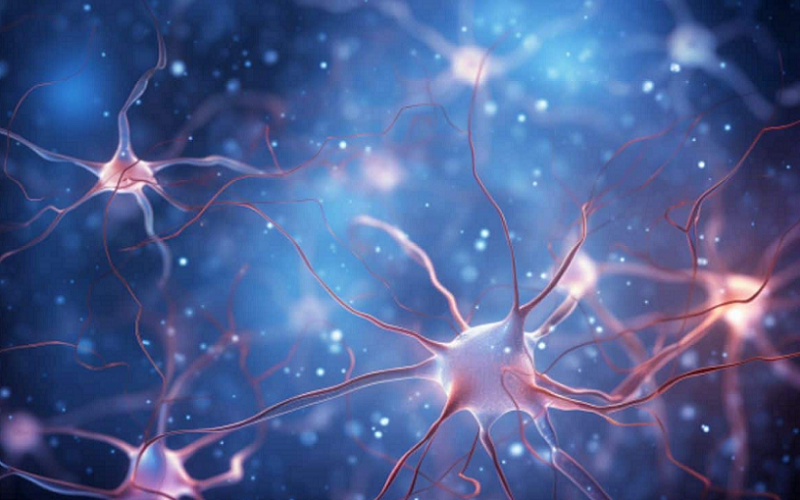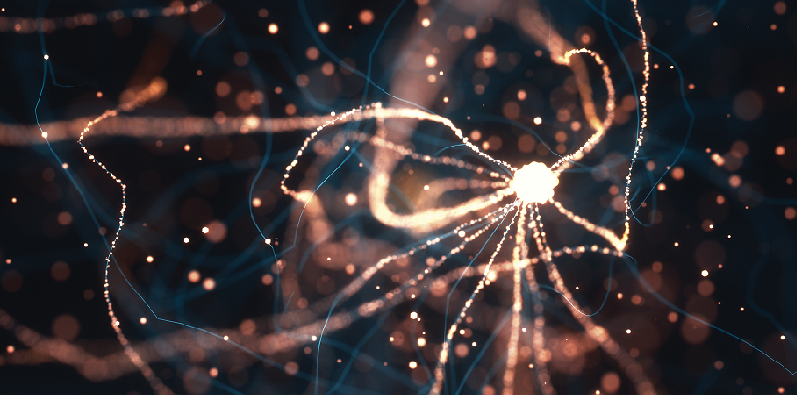
In the vast expanse of the universe, the human brain stands out as one of the most complex and intriguing phenomena. At the heart of this complexity are neurons, the fundamental building blocks of the brain and nervous system. These remarkable cells have enabled the development of consciousness, learning, memory, and the myriad cognitive abilities that define the human experience. Here we explore how neurons evolved from simple cellular structures in ancient organisms to the highly specialized and intricate networks found in modern brains.
Contents
- The Origins of Neurons
- Neuronal Diversity and Specialization
- The Role of Neurons in Brain Evolution
- Neuronal Plasticity and Evolutionary Adaptability
- References
- About the Author
The Origins of Neurons
Before diving into the evolutionary journey of neurons, it’s crucial to grasp what neurons are and why they are so important. Neurons are specialized cells designed to transmit information throughout the body. These biological wonders use electrical impulses and chemical signals to relay messages between different parts of the body and the brain, forming the basis of all our thoughts, behaviors, and perceptions.
Definition of Neurons
Neurons vary in shape and size, but all share three main parts: the cell body, dendrites, and an axon. The cell body contains the nucleus and the machinery necessary for the cell’s survival. Dendrites branch out from the cell body, receiving signals from other neurons, while the axon carries signals away from the cell body to other neurons, muscles, or glands. This unique structure enables neurons to perform their critical role in the nervous system.
The story of neurons begins long before the emergence of humans or even vertebrates, rooted deeply in the early chapters of life on Earth. Understanding where neurons come from involves peering back over half a billion years into the past, to a time when the first multicellular organisms started to appear. This exploration is not just about tracing the lineage of a type of cell but unraveling the origins of consciousness, sensation, and movement — the very phenomena that define much of life as we know it.
Early Life and the Precursors to Neurons
The journey towards the development of neurons and, consequently, nervous systems, started in the primordial oceans with the advent of multicellular life. These early organisms were simple in structure and function, lacking specialized systems for processing information and responding to their environment.
Discussion on the First Appearance of Neuron-Like Cells in Early Multicellular Organisms
In these ancient waters, the first semblance of neuron-like cells began to take shape. These primitive cells likely functioned in basic ways to allow organisms to respond to environmental cues. For instance, certain cells might have developed the ability to react to chemical gradients in the water, guiding the organism toward nutrients or away from harm. This rudimentary form of communication between cells laid the groundwork for the more complex signaling mechanisms seen in true neurons.
The Evolutionary Pressure for the Development of Nervous Systems
As life became more complex, with multicellular organisms evolving into more varied and sophisticated forms, the need for efficient communication within the organism grew. This pressure led to the evolution of specialized cells that could rapidly transmit signals across long distances, enabling faster responses to environmental changes. The development of nervous systems, beginning with simple networks and evolving into the complex arrangements seen in higher organisms, was a critical step in the evolution of life on Earth.
The Evolutionary Milestones in Neuronal Development
From these humble beginnings, neurons underwent a series of evolutionary transformations, each milestone marking a leap forward in the complexity and capability of life forms.
Key Transitions From Simple Nerve Nets to Complex Nervous Systems
The transition from diffuse nerve nets, where neurons were spread thinly and evenly throughout an organism, to centralized nervous systems was a major evolutionary leap. This shift allowed for the development of specialized areas for processing information and controlling the body, leading to increased efficiency and sophistication in behavior and perception [1].
In creatures like jellyfish and sea anemones, we see the earliest examples of these nerve nets — simple yet effective networks that control the organisms’ movements and responses to their environment. The evolution from these nerve nets to the centralized nervous systems found in more advanced organisms, such as worms and eventually vertebrates, illustrates the increasing complexity of life.
The Role of Genetic Mutations and Environmental Changes
Genetic mutations played a crucial role in the evolution of neurons. Random changes in the genetic code sometimes resulted in variations in cell function or structure that offered a survival advantage. Over millions of years, these advantageous traits were passed down and refined through natural selection, leading to the diverse and highly specialized neurons we see today.
Environmental changes also drove the evolution of neurons and nervous systems. As Earth’s environments transformed, organisms that could quickly and effectively respond to new challenges had a better chance of survival. This led to the development of more complex sensory systems and cognitive abilities, enabling organisms to navigate, find food, avoid predators, and eventually, in the case of humans, build civilizations.

Neuronal Diversity and Specialization
As life on Earth evolved, so too did the complexity of the nervous system, leading to a remarkable variety of neuron types, each specialized for different functions. This diversification was crucial for the development of sophisticated behaviors and higher cognitive functions in animals, including humans. The story of neuronal diversity and specialization is one of nature’s most fascinating tales, showcasing the intricate ways in which life adapts to its environment.
The Emergence of Different Types of Neurons
The nervous system’s complexity is mirrored in the diversity of its building blocks: the neurons. Each type of neuron has a unique role, contributing to the nervous system’s overall function. This specialization allows for the precise control of bodily functions and the nuanced processing of information.
Sensory Neurons, Motor Neurons, and Interneurons: Roles and Characteristics
Sensory neurons, motor neurons, and interneurons form the three main classes of neurons, each serving distinct functions. Sensory neurons are the nervous system’s input devices, converting external stimuli into electrical signals that can be processed by the brain. Motor neurons, on the other hand, serve as output devices, transmitting signals from the brain to muscles to initiate movement. Interneurons, the most numerous of the three, act as the nervous system’s complex wiring, processing information received from sensory neurons and formulating responses that motor neurons carry out [2].
This division of labor among different neuron types allows for the seamless integration of sensory input, internal processing, and motor output, enabling organisms to interact with their environment in sophisticated ways.
How Diversity in Neuronal Types Supports Complex Behaviors and Cognitive Functions
The diversity in neuronal types is not just a feature of advanced nervous systems; it is a prerequisite for the emergence of complex behaviors and cognitive functions. For example, the ability to learn and remember depends on the intricate interplay between different types of neurons, forming networks that can encode, store, and retrieve information. Similarly, complex behaviors such as navigating environments, recognizing patterns, and making decisions require the coordinated activity of sensory neurons, interneurons, and motor neurons.
Specialization of Neurons in Advanced Nervous Systems
As nervous systems evolved, so did the degree of specialization among neurons, leading to the development of advanced cognitive abilities and the emergence of specialized brain regions.
The Development of Specialized Brain Regions and Neural Circuits
In more complex animals, especially mammals, the nervous system includes specialized brain regions dedicated to different functions. For instance, the cerebral cortex, a layer of neural tissue that covers the brain’s outer portion, is involved in higher-order functions such as thought, language, and consciousness. Other areas, like the hippocampus, are crucial for memory and spatial navigation.
This specialization within the brain is made possible by the specialized functions of different neuron types. Together, they form neural circuits that process information in highly sophisticated ways, allowing for the nuanced thoughts, emotions, and behaviors that characterize higher life forms.
The Impact of Neuron Specialization on Sensory Processing, Memory, and Learning
The specialization of neurons has a profound impact on sensory processing, memory, and learning. For example, in the visual system, different types of neurons are sensitive to specific features of the visual scene, such as color, movement, or shape. This allows the brain to construct a detailed representation of the world from the basic sensory input.
Similarly, in memory and learning, different types of neurons and brain regions are involved in encoding new information, storing it, and retrieving it when needed. The plasticity of these neurons—their ability to strengthen or weaken connections based on experience—is the foundation of learning and memory [3].
The Role of Neurons in Brain Evolution
The evolution of neurons has been a pivotal force in the development of the brain, guiding the transformation from simple nerve nets in primitive organisms to the highly complex neural architectures found in mammals and, particularly, humans. This evolutionary journey has not only expanded the size and complexity of the brain but has also led to a remarkable increase in cognitive abilities across the animal kingdom. By examining the role of neurons in brain evolution, we can begin to appreciate the intricate processes that have shaped the minds of Earth’s diverse inhabitants.
Comparative Anatomy of Neuronal Structures Across Species
The study of neuronal structures across different species reveals a fascinating narrative of evolutionary innovation and adaptation. This comparative approach allows scientists to identify fundamental principles of brain organization and function that transcend individual species, highlighting the shared evolutionary heritage of all complex life forms.
Similarities and Differences in Neuronal Structures and Their Evolutionary Implications
A comparison of neuronal structures across species reveals both striking similarities and intriguing differences. For instance, the basic architecture of neurons—comprising cell bodies, dendrites, and axons—is remarkably consistent across the animal kingdom, from simple invertebrates to humans. This consistency suggests a common evolutionary origin for neurons and underscores their fundamental role in nervous system function.
However, differences in the complexity, density, and arrangement of neurons among species reflect the diverse evolutionary pressures and ecological niches that have shaped the nervous system. For example, the cerebral cortex in mammals, particularly primates, has evolved to be highly convoluted and densely packed with neurons, enabling advanced cognitive functions such as problem-solving, language, and abstract thought.
Insights From Studying the Brains of Various Animals on the Evolutionary Trajectory of Neurons
Studying the brains of various animals provides valuable insights into the evolutionary trajectory of neurons. For example, research on birds, known for their remarkable memory and navigational skills, has revealed sophisticated neural circuits in the hippocampus, analogous to those in mammals. This convergence suggests that complex cognitive abilities can evolve independently in different lineages through similar neural innovations.
Similarly, investigations into the neural systems of cephalopods, such as octopuses, have uncovered an entirely different organizational scheme, with a large proportion of neurons located in their arms. This unique arrangement allows for incredible control and sensory processing, demonstrating the versatility of neuronal evolution in adapting to specific environmental challenges and life strategies [4].
Neurons and the Development of Cognitive Abilities
The evolution of neurons has been instrumental in the development of cognitive abilities, providing the biological substrate for the emergence of consciousness, learning, and memory.
The Correlation Between Neuronal Complexity and Cognitive Capabilities
The correlation between neuronal complexity and cognitive capabilities is evident across species. Animals with more complex neural networks, particularly those with larger brains relative to body size, tend to exhibit higher levels of cognitive function. This relationship underscores the importance of neuronal diversity and specialization in supporting advanced mental processes.
In humans, the unprecedented complexity of the neural network, especially in regions involved in executive functions and consciousness, has enabled remarkable achievements in art, science, and technology. This complexity facilitates sophisticated communication, abstract reasoning, and the capacity for self-reflection—qualities that are considered hallmarks of human intelligence.
Theories on How Neuronal Evolution Has Contributed to the Development of Consciousness and Intelligence
Several theories have been proposed to explain how neuronal evolution has contributed to the development of consciousness and intelligence. One prevailing theory suggests that the expansion and increased connectivity of the prefrontal cortex, a brain region involved in decision-making and social behavior, have been crucial. This expansion allows for the integration of information from diverse brain regions, supporting complex thought processes and self-awareness.
Another theory focuses on the role of neural plasticity in cognitive evolution. Neural plasticity refers to the brain’s ability to change and reorganize itself by forming new neural connections. This adaptability is thought to be fundamental to learning, memory, and the emergence of sophisticated cognitive functions over evolutionary time.

Neuronal Plasticity and Evolutionary Adaptability
The concept of neuronal plasticity, the ability of neurons to change their connections and functions in response to experience or environmental changes, represents a cornerstone in understanding both the evolution of the nervous system and its current operation within individuals. This adaptability has been crucial for the survival and evolution of species, allowing organisms to learn from their environment and adjust their behaviors accordingly. Neuronal plasticity not only illuminates the mechanisms behind learning and memory but also underscores the brain’s capacity to evolve and adapt over generations.
Understanding Neuronal Plasticity
Neuronal plasticity is a fundamental property of the brain that enables it to modify its structure and function in response to external and internal stimuli. This dynamic capacity ensures that the nervous system remains flexible and adaptable, capable of overcoming challenges and capitalizing on new opportunities for learning and development.
The Ability of Neurons to Change and Adapt in Response to New Information
Neurons exhibit plasticity in various ways, including changes in the strength of synaptic connections, the growth of new dendritic branches, and even the formation of new neurons through neurogenesis in certain brain regions. These changes allow the brain to store new information, adapt to new situations, and recover from injuries. The plastic nature of neurons is what underlies our ability to learn from experience, remember new information, and refine motor skills through practice [5].
The Significance of Plasticity in Learning and Memory
The significance of neuronal plasticity extends beyond the cellular level, influencing our thoughts, behaviors, and overall cognitive abilities. Plasticity is the biological basis for learning and memory, enabling the brain to encode new information by strengthening certain synaptic connections while weakening others. This process, known as synaptic plasticity, is crucial for the acquisition of new knowledge and the ability to adapt to changing environments.
Neuronal Plasticity as an Evolutionary Mechanism
The evolutionary implications of neuronal plasticity are profound. This inherent adaptability has allowed the nervous system to evolve complex behaviors and cognitive functions, enhancing the survival and reproductive success of organisms across generations.
How Plasticity Contributes to the Survival and Adaptability of Species
Neuronal plasticity has been a key factor in the evolutionary adaptability of species, providing a mechanism for individuals to adjust to environmental changes and challenges. By facilitating learning and memory, plasticity enables organisms to acquire new behaviors that can be beneficial in navigating their environments, avoiding predators, and securing resources. These learned behaviors can influence evolutionary pathways by affecting which individuals are more likely to survive and reproduce, thereby passing on their genes to subsequent generations.
The Ongoing Evolution of the Human Brain Through Neuronal Plasticity
In humans, the ongoing evolution of the brain is inextricably linked to the plasticity of neurons. This plasticity not only supports individual learning and adaptation but also has implications for the evolution of human culture and technology. As humans learn and transmit knowledge across generations, they create increasingly complex social structures and technological innovations, which in turn influence the selection pressures on cognitive abilities. Thus, neuronal plasticity has played a crucial role in the development of human society and culture, illustrating the intricate interplay between biology and environment in the evolution of the brain.
References
[1] Evolution of neuronal types and families
[2] Early evolution of neurons
[3] Did Neurons Evolve Twice?
[4] Events in Early Nervous System Evolution
[5] A Closer Look to the Evolution of Neurons in Humans

